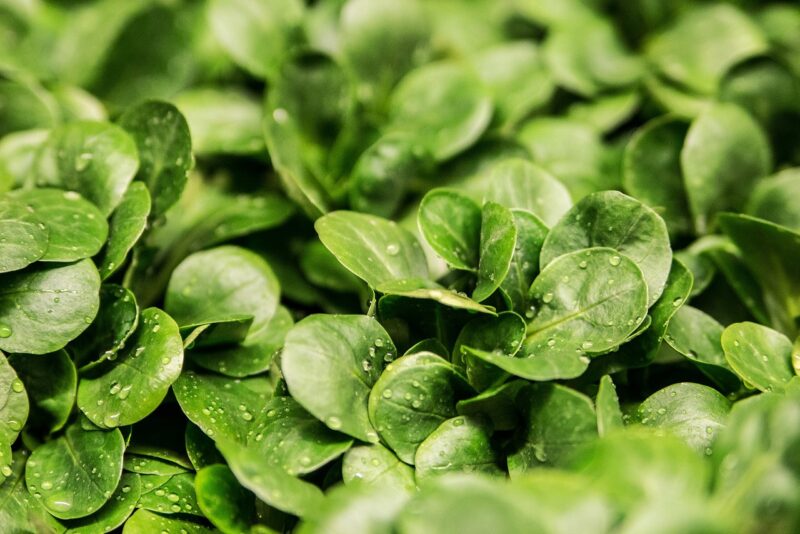How Strangely Shaped Fruits and Vegetables Are Taking Over Instagram
November 13, 2024

In recent years, social media has transformed the way we interact with various aspects of life, including our food. One of the most visually striking trends to emerge in this digital space is the sudden popularity of strangely shaped fruits and vegetables. From knobbly carrots to wonky cucumbers, these unique produce items have gained a substantial following on Instagram, captivating audiences with their whimsy and charm.
1. The Rise of Unconventional Produce on Social Media
The phenomenon of oddly shaped fruits and vegetables is not entirely new; farmers have long encountered bizarre mutations in their crops. However, the rise of social media has provided an ideal platform for showcasing these unique items. Instagram, in particular, has become a hub for food enthusiasts and casual observers alike, encouraging users to share images of their bizarre finds in the produce aisle.
Many people are taking to Instagram to delight in the eccentricity of food. Hashtags like #OddlyShapedVeggies and #WonkyProduce have gained traction, leading to a vibrant community that celebrates the beauty and unpredictability of fruits and vegetables. With millions of posts featuring these uniquely shaped items, it’s evident that our collective fascination with food extends beyond taste and nutrition; it includes visual appeal as well.
2. Why Are We Drawn to Strange Produce?
Several factors contribute to our fascination with oddly shaped fruits and vegetables. Among these are the concepts of sustainability, the organic movement, and the human desire for authenticity in a world increasingly dominated by mass production.
- Authenticity: In an age of perfection and artificiality, customers are constantly searching for authenticity. Strangely shaped produce represents nature’s randomness and imperfections, resonating with a growing societal desire to embrace individuality.
- Sustainability: The rise of farm-to-table movements and organic eating has shifted focus towards local, unconventional produce. Many consumers have begun to seek out these oddly shaped items, connecting with local farmers and supporting their efforts, often recognizing that these fruits and vegetables are just as nutritious and flavorful as their perfectly formed counterparts.
- Fun Factor: Let’s face it, food can be serious business. Oddly shaped fruits and veggies introduce an element of fun and playfulness to our meals. They are visually amusing and spark creativity in cooking, prompting people to showcase their beautiful, unconventional dishes online.
The appeal lies not just in the aesthetic enjoyment of these items but also in their potential for storytelling as they enrich our culinary experience.
3. Food Waste and the Movement for Upcycled Ingredients
The shift in focus toward uniquely shaped produce has helped to combat food waste, a growing problem worldwide. According to the Food and Agriculture Organization (FAO), approximately one-third of the food produced globally is wasted. Many consumers overlook oddly shaped produce, deeming them aesthetically unpleasing, and thus, they go unsold and eventually discarded.
By shining a spotlight on these fruits and vegetables, Instagram users and influencers are helping to reshape perceptions of food quality. Some companies have launched initiatives to offer discounts or special promotions on wonky produce, making them more appealing to buyers. This marks a significant development in the push against food waste, as it motivates consumers to embrace all forms of produce.
4. Creating Shareable Moments in the Kitchen
The advent of platforms like Instagram has made it easier for food enthusiasts to document their cooking adventures. Oddly shaped produce has quickly turned into an integral visual element of these culinary stories. Home cooks are crafting visually appealing dishes that showcase these unique items, using them creatively in salads, smoothies, and decorative garnishes.
Food bloggers and influencers feature these fruits and vegetables proudly in their cooking demonstrations. They highlight how to incorporate them into everyday meals, share recipes, and even suggest names like “Goblin Carrots” and “Monster Cucumbers.” The unusual shapes often lead to high engagement rates as users resonate with the charm and quirkiness of their culinary choices.
5. Growing Popularity of Specialty Farms and Local Markets
The popularity of strangely shaped fruits and vegetables has opened doors for specialty farms and local markets. Farmers are increasingly showcasing their bizarre yields, promoting them through social media to gather interest and buyers.
Customers can find these unconventional crops at farmers’ markets or through community-supported agriculture (CSA) programs, nurturing consumer relationships and support for their local agricultural ecosystems. Additionally, farms have begun organizing events, workshops, and picking days focused on celebrating uniqueness in nature while also educating consumers on how to minimize food waste.
6. The Future of Food Presentation and Aesthetic Appeal
As social media platforms continue to influence trends in the culinary space, the aesthetic appeal of food will persist as a key driving force. With the ongoing celebration of oddly shaped fruits and vegetables, sharing their beauty online fosters a sense of community among users who appreciate creativity, farming, and sustainability. The evolution of food presentation relies increasingly on embracing imperfections, encouraging a reconciliatory relationship with food that highlights storytelling.
- Creativity in Cooking: Oddly shaped fruits and vegetables encourage home cooks to explore their creativity. Utilizing these items can lead to innovative dishes that stand out visually, prompting experimentation while embracing fun techniques.
- Social Awareness: The engagement with uniquely shaped produce raises awareness of food waste, sustainability, and supporting local farmers, leading to conscious consumerism.
- Aesthetic Movement: Celebrating these interesting items adds a fun element to our meals while inspiring further discussion around the visual presentation of food itself, transcending it from mere sustenance to art.
As we move into the future, it is clear that oddly shaped fruits and vegetables aren’t just a passing trend; they represent a much deeper movement towards a more sustainable and creative culinary landscape.
Conclusion
The rise of strangely shaped fruits and vegetables on Instagram serves as an exciting opportunity to reshape our perceptions of food and sustainability. Not just whimsical novelties, these unique items hold potential for fostering a community committed to sustainability, novelty in cooking, and the celebration of imperfection.
As awareness grows, we become more connected to our food, local farms, and each other. So next time you come across a bulbous carrot or a crooked tomato, take a moment to appreciate its uniqueness. Share its beauty on social media, and join the movement in inspiring others to embrace these wonderfully strange gifts from nature.
Embracing the strange in our food can lead to a delightful, sustainable, and visually captivating culinary experience.







